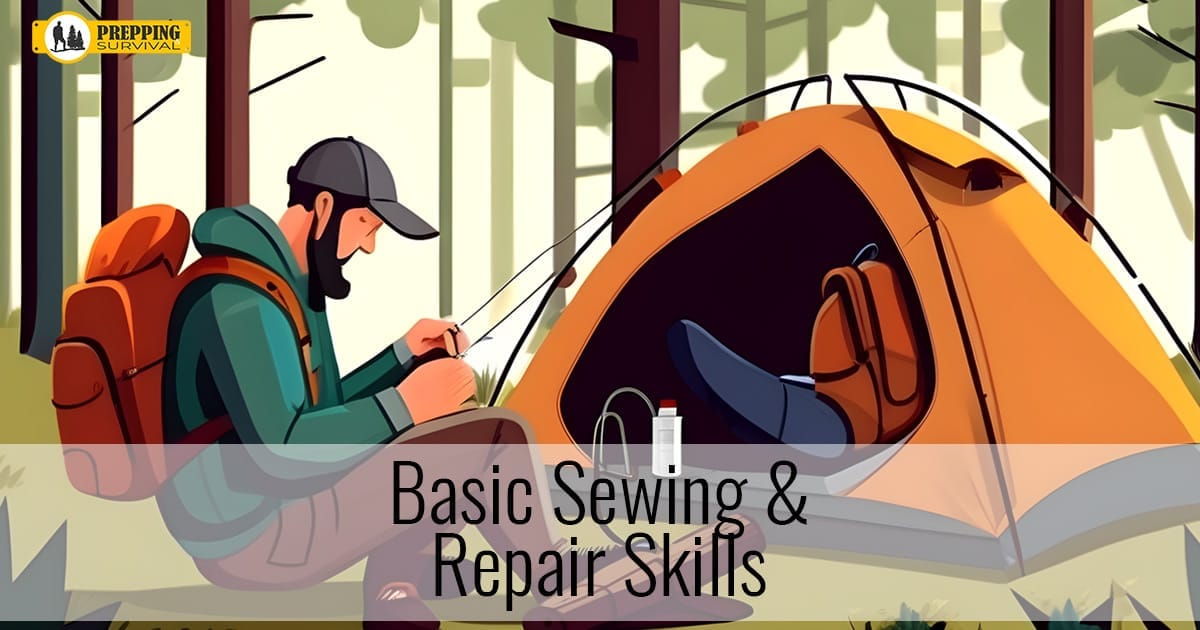Cyber threats aren’t just “out there” anymore—they’re part of everyday life. From fake emails trying to trick you into clicking a link, to criminals locking up a company’s files for ransom, the dangers are real and constant.

Approx reading time: 3 minutes

I remember the time when I first discovered the importance of basic sewing and repair skills. It was during a training in a survival situation, where such skills became my lifeline, offering practical solutions to extend the life of my gear, clothing, and essential equipment. Not only did it help me conserve valuable resources, but it definitely provided a psychological comfort, as it maintained a sense of normalcy and self-reliance those challenging conditions.
I learned how to mend tears, replace buttons, and even crafted basic items from the materials I found around me. It significantly impacted my survival efficiency and overall well-being. I understood that the basics of sewing were more than just handling a needle and thread; it was about resourcefulness and adaptability.
I used my new-found sewing skills to repair a torn backpack, fix a hole in my tent, and stitch up damaged clothing, which saved me from exposure to rain that came at me that night. I started with the fundamentals: threading a needle, tying knots that wouldn’t slip, and mastering simple stitches like the running stitch for quick repairs or the more durable backstitch for areas under stress.
In those possible survival scenarios, the materials I had were limited. So, improvisation became a critical skill. I used dental floss as a strong, durable thread substitute. I even fashioned pieces of wire and plant fibers into makeshift needles. I found that the environment itself provided materials for repairs or even new creations. I wove natural fibers into fabric patches and used softwood thorns as substitutes for safety pins or needles.
My repair skills quickly extended beyond textiles and just sewing skills and included a variety of materials and equipment. I used a simple sewing kit to repair gear, preventing small issues from becoming critical problems. Fixing a strap on my backpack ensured I could carry essential supplies, while repairing a tear in a mosquito net that was there to protect me from insect-borne diseases.
I didn’t just stop at repairs, I used my sewing skills to modify and create my gear tailored to my specific survival needs. I crafted items like pouches for gathering food, insulating covers to keep containers cool or warm, and even created basic footwear from available materials.
Engaging in these productive tasks gave me a sense of control and accomplishment, which was incredibly uplifting and would have been even more in real stressful survival situations. The act of repairing or creating offered a mental break from the rigors of survival, reducing my anxiety and improving my overall morale.
In preparation for any survival situation, I’ve learned it’s very important to always include a basic sewing kit in my bug out bag. This kit contains needles of various sizes, durable thread (or alternatives like dental floss), safety pins, buttons, and small scissors. Familiarizing myself with this kit and practicing basic sewing techniques could make a significant difference when faced with the need for repairs or the creation of essential items.
Through this short but intense experiences, I’ve found that basic sewing and repair skills are a critical component of survival preparedness. They empowered me to maintain and extend the usability of my gear, adapt to my environment, and upheld a sense of self-reliance and psychological well-being. These skills can help anyone bridge the gap between mere survival and the ability to thrive under adverse conditions, making them an invaluable addition to my survivalist toolkit and bug out bag.